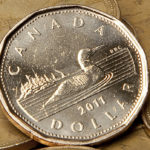Yesterday’s trade saw EUR/CAD within the range of 1.4153-1.4333. The pair closed at 1.4261, losing 0.40% on a daily basis, which followed two consecutive daily gains.
At 8:31 GMT today EUR/CAD was up 0.25% for the day to trade at 1.4298. The pair touched a daily high at 1.4314 at 8:09 GMT.
Fundamentals
Euro area
Italian GDP – preliminary estimate
The preliminary estimate of Italys annual Gross Domestic Product probably pointed to a 0.4% contraction in the fourth quarter of the year, according to the median forecast by experts. In Q3 economy shrank at an annualized pace of 0.5%, according to final data, released on December 1st 2014.
On a quarterly basis, Italian economy probably contracted 0.1% in Q4, following another negative growth rate of 0.1% during the third quarter. In Q3 nations GDP was influenced by a drop in investment activity and government spending. Gross fixed capital formation dropped by a seasonally adjusted rate of 1.0%, while government spending was 0.3% lower. The nations exports were up 0.2%, while imports dropped 0.3%. At the same time, consumer spending was a mere 0.1% higher.
In case a slower-than-projected rate of growth was reported, this would have a negative effect on the single currency. The National Institute of Statistics (Istat) will release the preliminary GDP data at 9:00 GMT.
Eurozone GDP – preliminary estimate
The seasonally adjusted preliminary Gross Domestic Product in the Euro zone probably expanded at an annualized rate of 0.8% during the fourth quarter of 2014, according to expectations, following another 0.8% increase of the GDP in the third and the second quarters, according to final data. The preliminary GDP during the fourth quarter last year compared to the previous quarter probably showed a 0.2% expansion, or the same rate of growth as in Q3. Household and government expenditure supported economic growth in the third quarter, while investments and external trade had a negative impact. Household final consumption expenditure expanded at a quarterly rate of 0.5% in Q3, following a 0.3% growth in the previous quarter. Gross fixed capital formation decreased 0.3%, following another 1.2% drop in the prior quarter. The contribution of the external balance was negative with exports contributing 0.3% to overall growth and imports subtracting 0.5%, according to the report by the Eurostat.
The GDP represents the total monetary value of all goods and services produced by the region over a specific period of time. What is more, it is the widest indicator of economic activity in the area. Currency traders will usually look for higher rates of growth as a sign that interest rates may follow the same direction. Higher interest rates will usually attract more investors, willing to purchase assets in the Euro area, while, at the same time, this will boost demand for the common currency. Therefore, in case growth in the single currency zone exceeded expectations, this would provide support to the euro. Eurostat is expected to release the preliminary GDP report at 10:00 GMT.
Canada
Manufacturing Sales
Manufacturing sales in Canada probably increased 1.0% in December compared to November, according to market expectations, following a 1.4% decrease in November and a 1.1% drop in October. In September shipments were up at a monthly rate of 2.2%. The Monthly Survey of Manufacturing features statistical data regarding sales of finished goods, inventories, unfilled orders and new orders in Canadian sector of manufacturing. About 10 500 items and 27 000 companies are encompassed.
Manufacturing sales are considered as an indicator of demand in the future. An increase in the number of goods and unsold inventories suggests, that demand is not sufficient and vice versa. On the other hand, an increase in sales (shipments) speaks of stronger demand. Therefore, in case shipments rose at a faster-than-projected pace, this might have a bullish impact on Canadas dollar. Statistics Canada will release the manufacturing data at 13:30 GMT.
Pivot Points
According to Binary Tribune’s daily analysis, the central pivot point for the pair is at 1.4249. In case EUR/CAD manages to breach the first resistance level at 1.4345, it will probably continue up to test 1.4429. In case the second key resistance is broken, the pair will probably attempt to advance to 1.4525.
If EUR/CAD manages to breach the first key support at 1.4165, it will probably continue to slide and test 1.4069. With this second key support broken, the movement to the downside will probably continue to 1.3985.
The mid-Pivot levels for Monday are as follows: M1 – 1.4027, M2 – 1.4117, M3 – 1.4207, M4 – 1.4297, M5 – 1.4387, M6 – 1.4477.
In weekly terms, the central pivot point is at 1.4254. The three key resistance levels are as follows: R1 – 1.4399, R2 – 1.4626, R3 – 1.4771. The three key support levels are: S1 – 1.4027, S2 – 1.3882, S3 – 1.3655.





